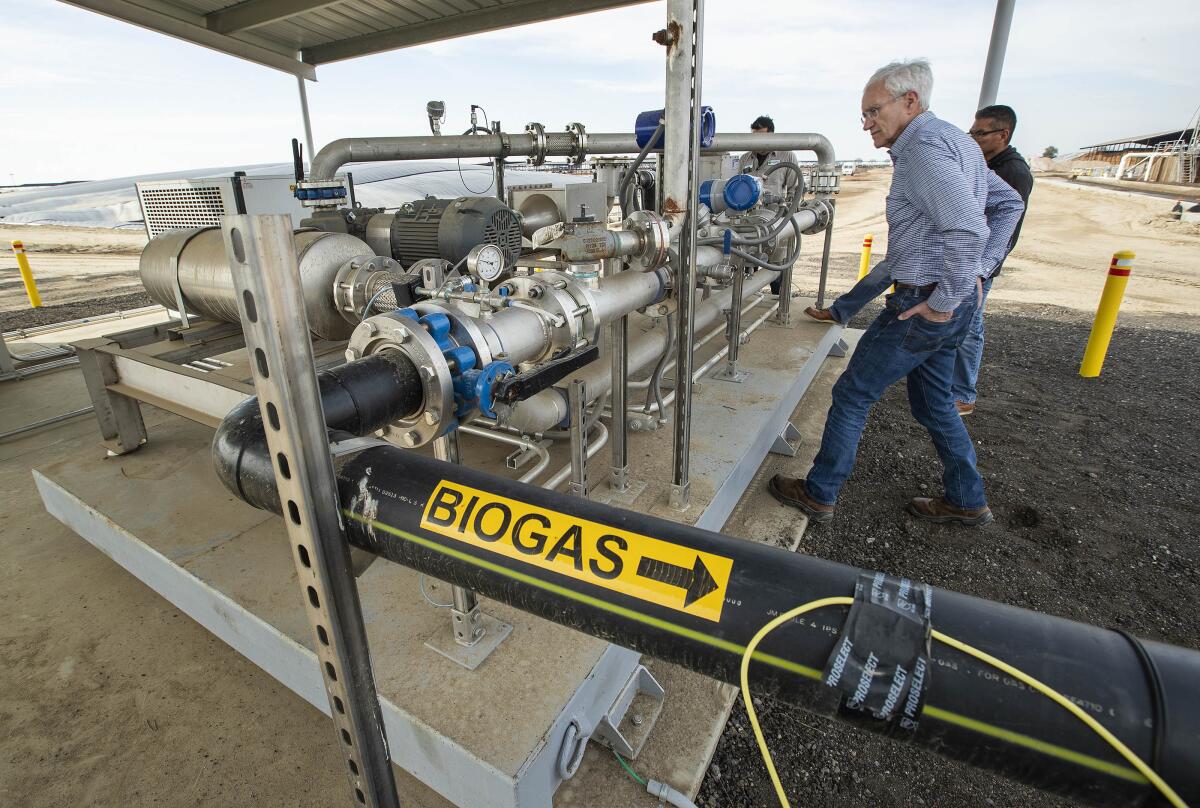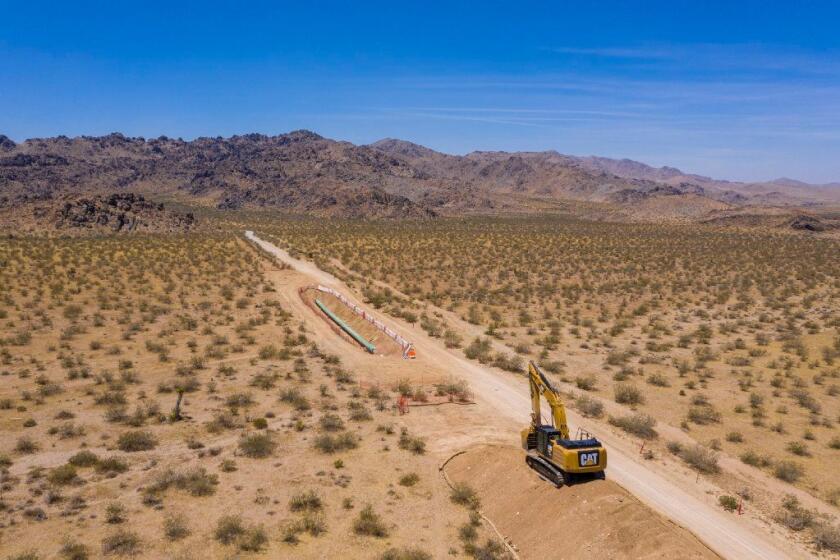Cow poop could fuel California’s clean energy future. But not everyone’s on board

PIXLEY, Calif. — Lyle Schlyer grinned as a river of frothing manure oozed down a concrete channel, the murky greenish fluid soon disappearing into a storm drain-like hole.
It was a sunny March afternoon, a few days before the novel coronavirus began shutting down much of California, and the smell of cow dung was doing nothing to dampen Schlyer’s enthusiasm. He stood atop a towering contraption that separated the manure into solid and liquid parts. A conveyor belt deposited the brown solids at the top of a stinking mound. The fluids filtered through narrow slits in a metal screen before continuing down the concrete channel.
The liquids would eventually reach a double-lined holding pond, larger than a football field and covered by a thick black tarp. A stew of gases — mostly methane and carbon dioxide — bubbled up under the tarp, creating enough pressure that you can walk across the undulating surface with sinking steps, like an open-air bounce house or a bizarre sand dune.
A few steps away, thousands of Holstein cows looked on, their moos audible over the industrial whir of the manure separator.
“It’s the grittier side of renewable fuel,” Schlyer said.
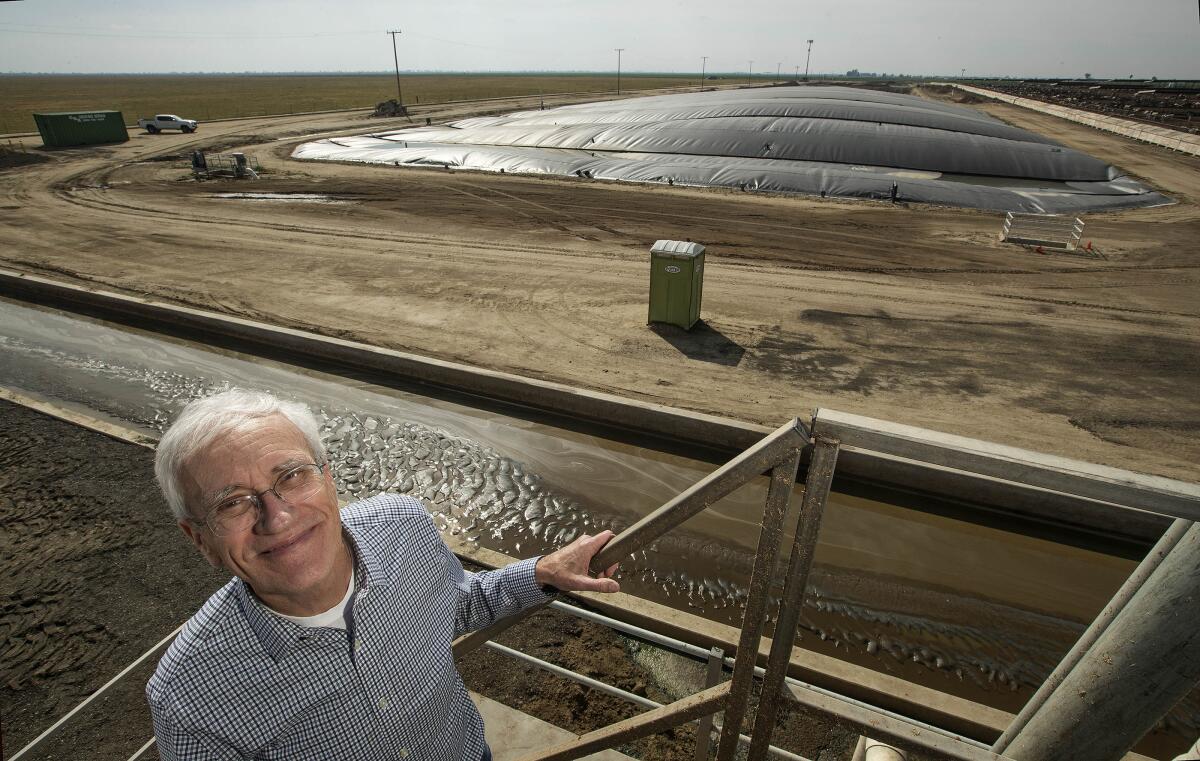
At this dairy farm outside the San Joaquin Valley town of Pixley, Schlyer’s company turns cow droppings into energy. Left untouched, the decomposing manure might otherwise spend months sitting in open lagoons, getting broken down by bacteria in a reaction that produces methane gas, a powerful planet-warming pollutant.
Calgren Renewable Fuels captures that methane before it enters the atmosphere, then injects it into the pipeline network owned by Southern California Gas Co., a utility that serves more than 21 million people from Fresno to the U.S.-Mexico border.
SoCalGas calls the manure fuel “renewable natural gas” and says it can help fight climate change by keeping methane out of the atmosphere, and by replacing some of the “fossil” natural gas that normally flows through the company’s pipelines.
This is one vision of California’s clean-energy future. It’s gaining traction in the gas industry, and with some government officials.
But not everyone is on board with a future powered by cow poop.
::
Two weeks later, the California Public Utilities Commission met via video conference amid the tumult of the COVID-19 pandemic. The commission unanimously approved $80 million in incentives for the construction of all-electric homes that don’t use natural gas, and $120 million to jump-start the market for low-emission space and water heaters in residential buildings.
In other words, $200 million primarily targeted at negating the need for gas — renewable or fossil.
“A quarter of our emissions in the state come from our use of natural gas. About half of that is in our homes, and the other half of that is in the generation of electricity,” Commissioner Martha Guzman Aceves said before the vote. “We have to take them all on.”
Phasing out fossil gas is one of the world’s biggest challenges on the road to a stable climate.
Natural gas is cheap and abundant, and it recently overtook coal as America’s largest electricity source. Although it burns more cleanly than coal, planet-warming emissions from gas are rising faster globally than coal emissions are falling, according to the Global Carbon Project.
The gas industry sees renewable gas, from dairies and other sources, as an ideal solution.
“Our nation’s vast natural gas pipeline system — 2.6 million miles — is existing energy infrastructure that can be put to further use delivering high-value sources of energy like renewable natural gas today and hydrogen in the future,” Karen Harbert, president of the American Gas Assn., said in a written statement to The Times.
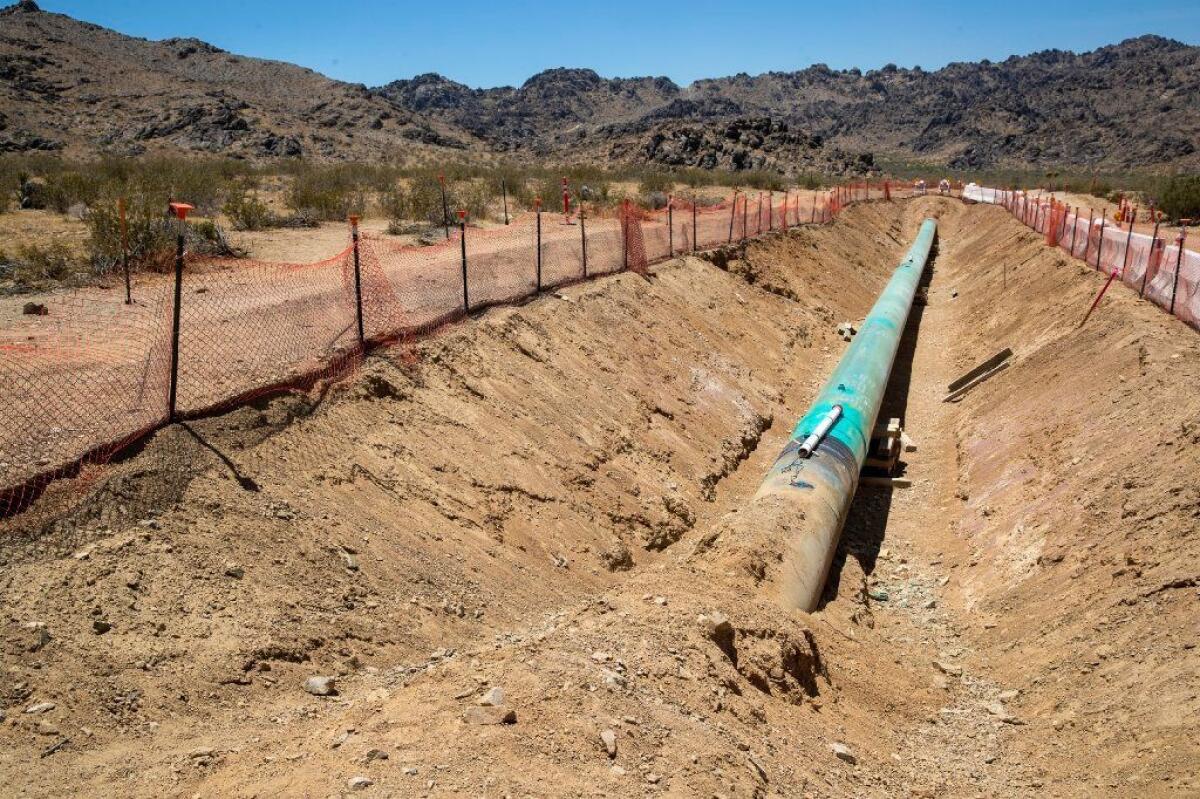
But in California, state officials have largely embraced electricity as the best strategy for cutting emissions from homes and workplaces. They hope to encourage people to replace their gas space heaters and water heaters with electric heat pumps, and their gas stoves with induction cooktops. Then as the electricity supply gets cleaner, heating and cooking will get cleaner, too.
Over the last year, 30 California cities and counties have required or encouraged construction of all-electric buildings. That push has spooked gas utilities in other states, including Arizona, where Gov. Doug Ducey signed a bill blocking cities from banning gas.
Environmentalists say renewable gas has many of the same problems as fossil gas: It leaks from pipelines, adding a hard-to-measure climate cost. It can contribute to unhealthy air quality inside your home.
And it requires consumers to keep paying for the upkeep of aging infrastructure that has caused several costly disasters, including the deadly San Bruno gas pipeline explosion and the Aliso Canyon methane blowout.
Two years after methane gas began leaking from Southern California Gas Co.’s Aliso Canyon storage field, one of the company’s key pipelines exploded, starting a fire in the desert and leaving a smoking crater in the ground.
Merrian Borgeson, a scientist with the Natural Resources Defense Council, described “renewable gas” as a catch-all term used by fossil fuel promoters to describe many energy sources, some of which are cleaner than others. She said there’s a big difference between capturing methane at sewage treatment plants — where the gas is a byproduct of wastewater processing — and growing crops specifically for use in methane production, which can destroy ecologically sensitive lands.
“A lot of these things aren’t really renewable,” Borgeson said.
In the San Joaquin Valley, environmental justice advocates worry that renewable gas will help sustain polluting dairy farms.
The Leadership Counsel for Justice and Accountability — a Fresno-based nonprofit that works with rural, low-income communities — cites reports showing that dairies contribute to elevated nitrate levels in groundwater and are a major source of smog-forming emissions. The group has slammed the California Department of Food and Agriculture for awarding more than $100 million to help companies build methane-capturing “anaerobic digesters,” including some of Calgren’s facilities.
“They’re not taking into account the local impacts,” said Blanca Escobedo, a policy advocate for Leadership Counsel.
Your support helps us deliver the news that matters most. Subscribe to the Los Angeles Times.
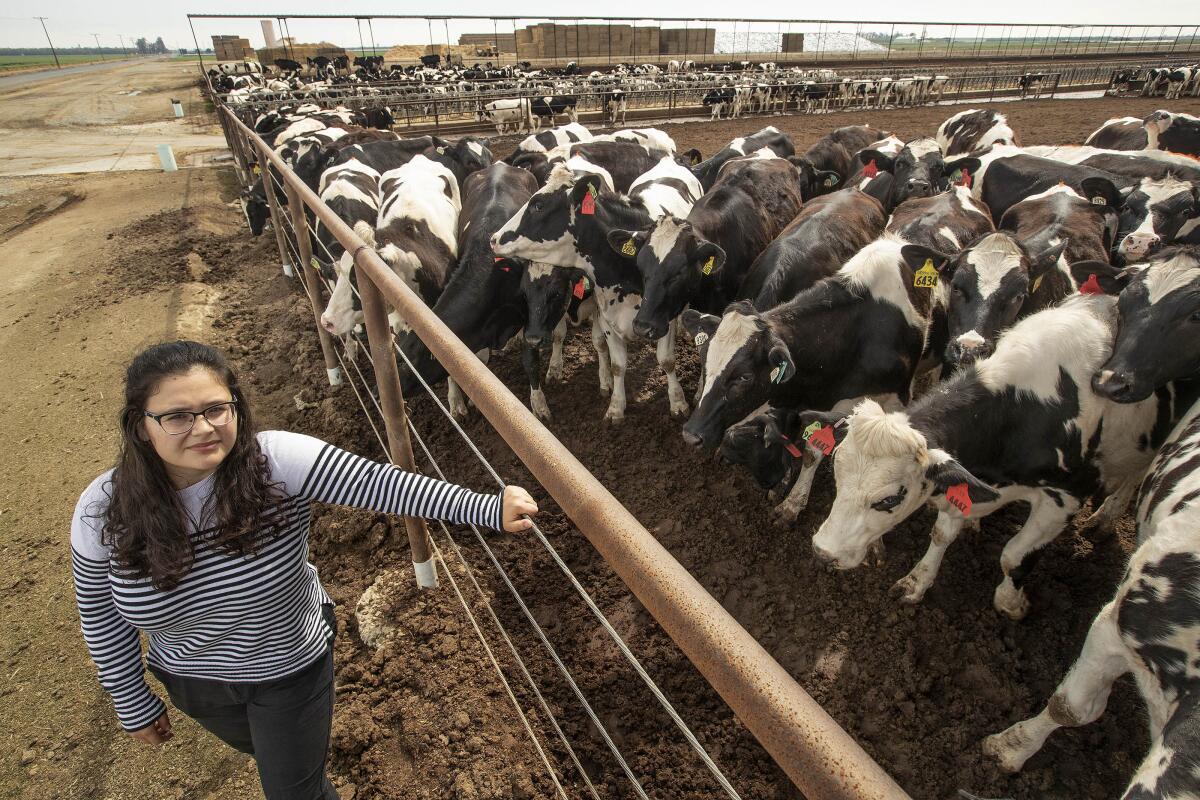
Steve Lyle, a spokesman for the California Department of Food and Agriculture, said in an email that dairy digesters are “one of the most cost-effective ways of reducing [greenhouse gases], especially methane.” And dairy industry officials say they’ve taken steps to reduce air and water pollution and must comply with strict regulations.
Critics, though, say California should encourage smaller-scale, more sustainable dairies that reduce emissions by avoiding the need for huge manure lagoons — which create the oxygen-deprived environments that allow methane to form.
::
One of the loudest cheerleaders for renewable gas is SoCalGas, a subsidiary of San Diego-based Sempra Energy.
Faced with growing political support for gas-to-electric switching, which threatens to undermine the company’s business model, SoCalGas has touted renewable gas as part of its vision to become “the cleanest natural gas utility in North America.”
The company argues that adding renewable gas to its fuel mix will be easier and cheaper than pushing people to install electric appliances. It’s a message that has convinced more than 100 city and county governments to pass resolutions, originally drafted by SoCalGas, urging state officials to support “balanced energy solutions.”
Southern California Gas is engaged in a wide-ranging campaign to preserve the role of its pipelines in powering society.
SoCalGas hopes to replace 20% of the fossil gas in its pipelines with renewable gas by 2030, which the utility claims would reduce climate pollution just as much as nearly all its residential and commercial customers switching to electricity.
That claim stems from a SoCalGas-commissioned report and is based on the “negative emissions” potential of renewable gas.
When natural gas is burned in a furnace or a kitchen stove, it generates carbon dioxide, fueling the climate crisis.
But if that natural gas was originally captured at a dairy farm or another industrial source — where it otherwise would have gone into the atmosphere — there’s also an emissions reduction. And because methane traps heat much more powerfully than carbon dioxide does, the planetary benefits of less methane can outweigh the damages from more carbon dioxide.
SoCalGas officials have also touted a recent report from Lawrence Livermore National Laboratory, a federal research institute.
The report concluded that California can achieve its long-term goal of “carbon neutrality” — removing as much carbon from the atmosphere as it emits — at a cost of less than $10 billion per year, through strategies that include producing and utilizing large amounts of renewable gas from dairies, landfills and sewage treatment plants.
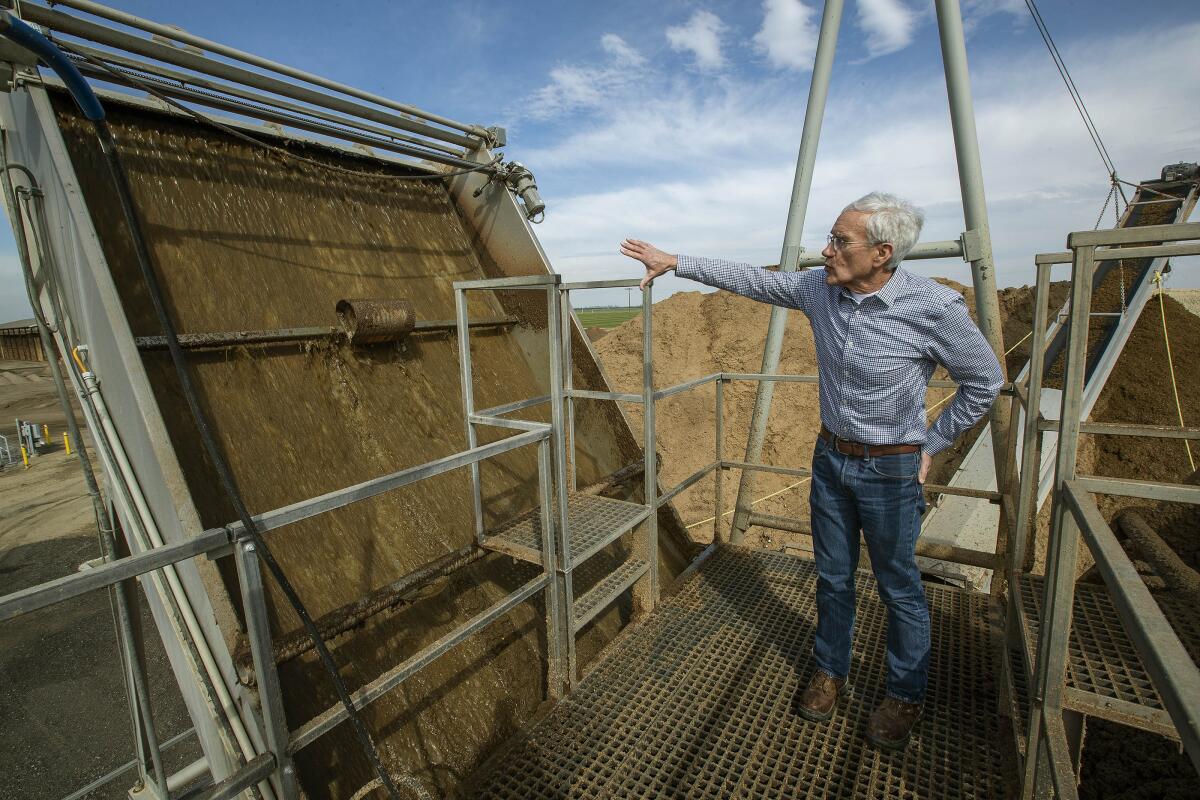
The whole thing hinges on capturing and storing the carbon dioxide that bubbles up alongside methane at those facilities — an expensive process that would essentially be subsidized by renewable gas sales.
“If you follow the carbon, it always started from the atmosphere and then was taken up by a plant,” said Sarah Baker, a chemist at Lawrence Livermore and lead author of the report. “And now it’s stored safely underground.”
Still, the lab’s results suggest that SoCalGas’s preferred use of renewable gas — injecting it into pipelines and selling it to homes and workplaces for use in heating and cooking — is not the most cost-effective carbon removal strategy.
California could remove more carbon from the atmosphere, at a lower cost per unit of carbon, by sending renewable gas to power plants to be burned for electricity. That way the CO2 generated at those plants could be captured as well — which wouldn’t be possible if the gas were instead burned in millions of individuals furnaces and stoves.
::
Even studies funded by the gas industry suggest a relatively limited role for renewable gas.
Take a May 2019 report funded by SoCalGas and fellow Sempra subsidiary San Diego Gas & Electric, among other industry players, and written by the Energy Futures Initiative, which is led by Ernest Moniz, President Obama’s second-term energy secretary.
The report described renewable gas as one of several “critical clean energy pathways” for California. But it also found renewable gas has the potential to replace just 9% of current statewide gas consumption by 2030. That’s not enough to fully replace the fossil gas now used by commercial buildings, let alone homes, power plants and industry.
A December 2019 report commissioned by the American Gas Foundation concluded the United States is likely to produce, at most, enough renewable gas by 2040 to supply just 14% of current U.S. gas consumption, although that percentage could rise as overall gas use declines due to efficiency improvements.
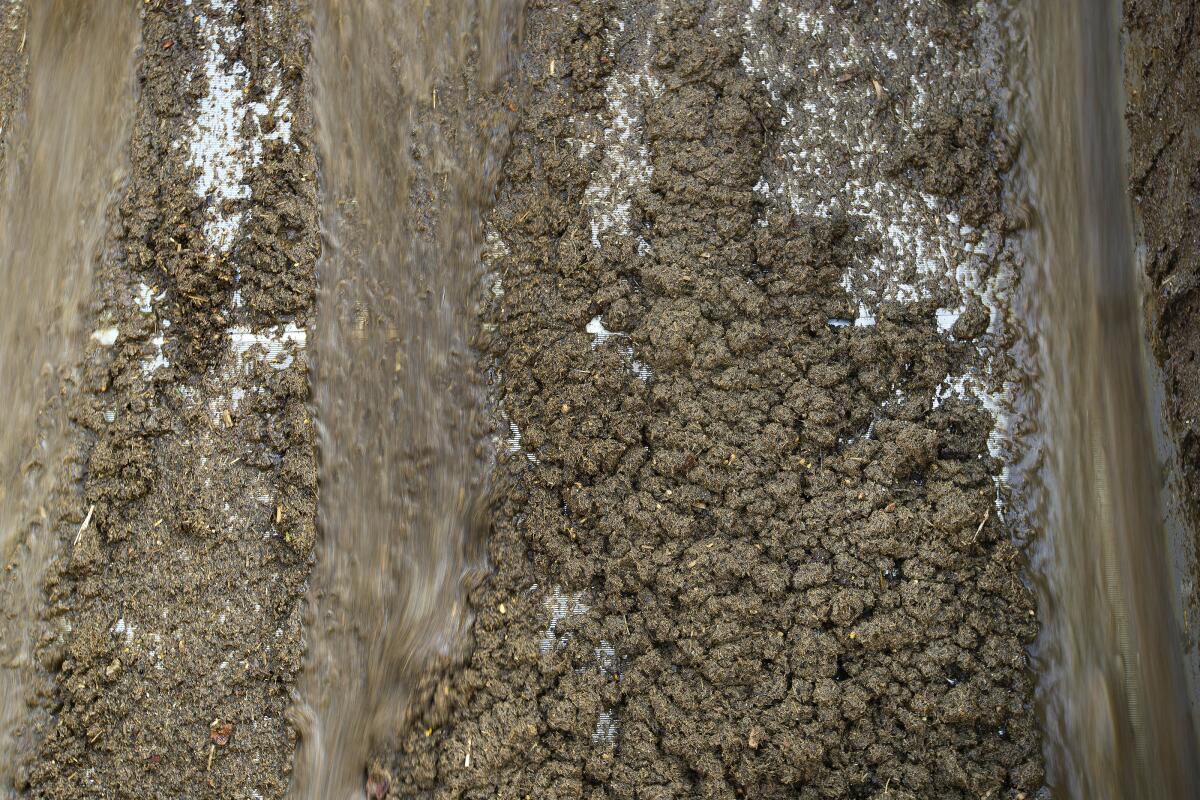
Environmentalists say those limited quantities of renewable gas should be dedicated to fossil fueled activities that are impossible or prohibitively expensive to electrify, such as cement and steel production, aviation or power generation. They say it would be a waste to use the fuel for heating and cooking, where electric alternatives are increasingly affordable.
In a recent report for the California Energy Commission, the consulting firm Energy and Environmental Economics, known as E3, concluded that renewable gas is so much more expensive than fossil gas, and its availability so much more uncertain, that all-electric buildings are “likely to be a lower-cost, lower-risk long-term strategy” for reducing climate pollution.
“Electrification of buildings, and particularly the use of electric heat pumps for space and water heating, leads to lower energy bills for customers over the long term,” E3 wrote.
SoCalGas has pushed back, arguing that E3 underestimated how much electricity rates will rise as electric utilities upgrade their infrastructure to prevent power lines from starting fires. SoCalGas also says the electric grid can be unreliable during disasters, with utilities increasingly resorting to shutting off power to reduce the risk of deadly blazes.
Gas company spokesman Chris Gilbride pointed to California’s clean energy mandate — which will require electric utilities to get 60% of their supplies from renewable sources by 2030 — as the type of policy lawmakers ought to pursue for renewable gas.
Such a policy “can help us deliver increasingly renewable energy to our customers, promote reliable gas and electricity services and keep energy bills affordable,” Gilbride said in an email.
::
But at least for now, none of the renewable gas running through SoCalGas’s pipelines is meant to serve homes.
Instead, it’s transportation fuel.
Prompted by state and federal programs that incentivize cleaner vehicles, Calgren supplies methane to fueling stations for heavy-duty trucks that run on compressed natural gas, an alternative to diesel. Nearly all of the 120 or so dairy digesters operating or in development in California are targeted at that same end use: transportation, not heating and cooking.
Schlyer said gas company officials “like to take credit for our project,” even though they’re just moving his fuel.
“I don’t have anything to do with SoCalGas,” he said, “other than we built an injection point for their pipeline.”
